Stephan’s Quintet – HCG 92 / Arp 319 Compact Galaxy Group - 24 Hours of LRGB!
Date: November 23, 2025
Cosgrove’s Cosmos Catalog ➤#0155
Stephan’s Quintet is a facinating galaxy cluster that was a real test of my new Galaxy Scope - The SharpStar SCA260 V2. I threw away a big chunk of my collected data to keep only the sharpest images for this rendition. (Click image for hi-res version via AstroBin.com.)
Stephan’s Quintet: four colliding galaxies, one foreground impostor, and a front-row seat to galaxy evolution in action.
🔭 Project Summary
Target: Stephan’s Quintet – HCG 92 / Arp 319 Compact Galaxy Group
Capture Dates: October 16, 17, 26–28, 2025
Constellation: Pegasus • Distance: ≈ 270–300 million light-years (main group)
Type: Compact Galaxy Group / Interacting Galaxies (with foreground spiral NGC 7320)
Imaging Period: October 16–28, 2025 • Total Integration: 23 h 57 m (LRGB)
Filters: L · R · G · B (ZWO 36 mm LRGB Gen II)
Telescope: Sharpstar SCA260 V2 260 mm f/5.0 Special Cassegrain Astrograph (≈1300 mm)
Camera: ZWO ASI2600MM-Pro (−15 °C; Gain 0 LRGB)
Mount: iOptron CEM70 on custom steel pier
Processing: PixInsight (LRGB) & Photoshop
Location: Whispering Skies Observatory · Honeoye Falls, NY (USA)
Acquisition notes: L: 412 × 90 s; R: 181 × 90 s; G: 174 × 90 s; B: 191 × 90 s at −15 °C, Gain 0; total 23 h 57 m after culling bad subs.
📸 Capture Details
Nights: October 16, 17, 26–28, 2025
| Channel / Filter | Frames × Exposure | Settings | Total |
|---|---|---|---|
| L — ZWO Lum (36 mm unmounted) | 412 × 90 s | bin 1×1 • −15 °C • Gain 0 | 10 h 18 m |
| R — ZWO Red (36 mm unmounted) | 181 × 90 s | bin 1×1 • −15 °C • Gain 0 | 4 h 31 m |
| G — ZWO Green (36 mm unmounted) | 174 × 90 s | bin 1×1 • −15 °C • Gain 0 | 4 h 21 m |
| B — ZWO Blue (36 mm unmounted) | 191 × 90 s | bin 1×1 • −15 °C • Gain 0 | 4 h 46 m |
| Total Integration (after culling): 23 h 57 m (LRGB) | |||
Calibration Frames
- 25 × dark frames @ 90 s, bin 1×1, −15 °C, Gain 0
- 30 × dark-flats @ flat exposure times, bin 1×1, −15 °C, Gain 0
- Flats (one set): 15 each — L, R, G, B
Table of Contents Show (Click on lines to navigate)
Annotated Image
This annotated image was created with the ImageSolver and FinderChart scripts in PixInsight.
The Location in the Sky
This annotated image created with ImageSolver and FinderChart Scripts in PixInsight.
🔭 About The Target
Overview
In simple terms, Stephan’s Quintet is a group of galaxies in mid-collision, showing what happens when several galaxies crash together over hundreds of millions of years.
Stephan’s Quintet is a famous compact cluster of galaxies located in the constellation Pegasus, about 270–300 million light-years from Earth. Despite the name, only four of the five galaxies in this visual grouping are actually interacting as a true physical group (Hickson Compact Group 92). At the same time, the fifth is a foreground galaxy much closer to us.
The four far galaxies are tangled in a dramatic gravitational dance – colliding and merging – which makes Stephan’s Quintet a striking example of galactic interaction. This cosmic collision has produced spectacular distortions in the galaxies’ shapes, including long tidal tails of stars, warped spiral arms, and an enormous shock wave blasting through intergalactic space. Astronomers study Stephan’s Quintet as a laboratory for galaxy evolution, since the interactions trigger bursts of star formation and provide insight into how galaxies merge over time. (In fact, this was the first compact galaxy group ever discovered, and it continues to captivate both researchers and amateur observers alike.)
It even earned a place as one of the James Webb Space Telescope’s first imaging targets in 2022, which revealed stunning new details of the group’s structure  
Discovery and Naming
Stephan’s Quintet is named after the French astronomer Édouard Jean-Marie Stephan, who first observed this cluster in 1876 while directing the Marseille Observatory. Using an 80-cm Foucault reflector (one of the largest telescopes of its time), Stephan sighted a grouping of “very faint, very small” nebulous smudges in Pegasus.
He initially recorded four nebulae in close proximity (which later received the New General Catalogue designations NGC 7317, 7318, 7319, and 7320 in 1888). Decades later, improved observations revealed that one of Stephan’s original nebulae, NGC 7318, was actually two overlapping galaxies – now labeled NGC 7318A and NGC 7318B – bringing the total to five galaxies, hence the name Stephan’s Quintet.
The discovery was historically significant: it was the first compact galaxy group ever identified, long before astronomers understood the nature of galaxy collisions. Stephan’s find wasn’t fully appreciated until much later, when it became clear these were distant galaxies interacting, not just nearby gas clouds.
Over the years, the quintet has appeared in various catalogs under different designations. In 1966, Halton Arp included it in his Atlas of Peculiar Galaxies as Arp 319, recognizing it as an unusual group of galaxies.
It is also listed as Hickson Compact Group 92 (HCG 92), as Paul Hickson’s 1982–1993 surveys of compact galaxy clusters highlighted Stephan’s Quintet as a quintessential example. Hickson described it as a “famous group… a compact quartet plus a bright, lower-redshift spiral galaxy,” noting the odd one out – NGC 7320 – is markedly closer than the rest.
Some older astronomy literature also refers to the group as VV 228 (from a catalog of interacting galaxies). Thus, Stephan’s Quintet is known by multiple names, but all refer to this same intriguing collection of galaxies.
Members of the Quintet
Stephan’s Quintet consists of five named galaxies (and one additional nearby galaxy often associated with the group). Below are the member galaxies and their key characteristics:
NGC 7317: An elliptical galaxy (type E4) that appears relatively undisturbed compared to its siblings. NGC 7317 is the smallest member, with an apparent magnitude of around 14.6 and a halo-like oval shape. Lying roughly 300 million light-years away, it is cataloged as HCG 92E. This galaxy’s smoother appearance (no spiral arms) suggests it has not been strongly affected by the recent collisions in the group.
NGC 7317.
NGC 7318A and NGC 7318B: A striking pair of colliding galaxies, originally thought to be a single object (they shared the NGC 7318 designation until astronomers discerned two cores). NGC 7318A is a peculiar elliptical galaxy, and NGC 7318B is a disturbed barred spiral galaxy; together, they lie about 280 million light-years away. These two have already begun to merge with each other, and their violent interaction is one of the main sources of chaos in Stephan’s Quintet. NGC 7318A (the “lower” galaxy in many images) is magnitude ~14.4, while NGC 7318B (the “upper” galaxy, closer to the group’s center) is slightly brighter at ~13.9. The collision of 7318A/B has strewn glowing gas and young star clusters around them, and NGC 7318B in particular is plunging into the group at high speed, driving a giant shock wave (more on that below). In catalogs, NGC 7318A and NGC 7318 B are sometimes labeled HCG 92D and 92B, respectively.
NGC 7318 A & B.
NGC 7319: A barred spiral galaxy that gravitational interactions have severely warped. Its once orderly spiral arms are now noticeably stretched and distorted – they curl back nearly 180° toward the galaxy’s core, looping behind the central bar. NGC 7319 lies about 310 million light-years away and shines at mag ~14.4. It hosts a Type 2 Seyfert active nucleus, meaning a supermassive black hole (about 24 million times the Sun’s mass) is feasting on material in its core and emitting intense energy. Indeed, the active nucleus of NGC 7319 is a strong source of infrared and radio emission. This galaxy has also been largely stripped of neutral hydrogen gas – likely due to past close encounters (possibly with the intruder galaxy NGC 7320C) about 100 million years ago. Tidal tails of stars link NGC 7319 to its neighbors, and along these tails are active star-forming regions sparked by the collisions. NGC 7319 is listed as HCG 92C in Hickson’s catalog.
NGC 7319.
NGC 7320: A spiral galaxy that appears to be part of the quintet but is actually a foreground object lying much closer to us. At roughly 39 million light-years distant – only about one-seventh the distance of the others – NGC 7320 is not gravitationally bound to the interacting group. This makes it a line-of-sight coincidence. Visually, NGC 7320 is the brightest of the five (apparent magnitude ~13.2) and is often seen on the left side of this image of Stephan’s Quintet. It has well-defined spiral arms studded with massive H II regions (clouds of ionized hydrogen) where new stars are forming. Because its redshift (~790 km/s) is so much smaller than that of the other four galaxies (which have redshifts ~6600 km/s), astronomers long ago suspected NGC 7320 was a foreground galaxy – a fact confirmed when the Hubble Space Telescope resolved individual stars in NGC 7320, something that wouldn’t be possible if it were 300 million light-years away. Interestingly, NGC 7320 may belong to a different galaxy group, the Deer Lick Group (the NGC 7331 group), since it lies at a similar distance to the galaxy NGC 7331 (Caldwell 30).
NGC 7320.
NGC 7320C: Sometimes called the “sixth member” of Stephan’s Quintet, this galaxy sits just outside the traditional quintet field. NGC 7320C is a small, faint spiral (mag ~16.7) located southeast of the main group. Published distances for 7320C are not entirely consistent, but its redshift and tidal tail connection tie it to HCG 92. It isn’t usually counted as part of the quintet’s visual grouping, but it is very much part of the physical galaxy group (likely HCG 92F in notation). In fact, astronomers believe NGC 7320C was an intruder galaxy that dove through the center of the quartet in the past, possibly more than once. This galactic interloper bears a long tidal tail of stars that was ripped out during its encounter – a tail that appears to connect NGC 7320C with the distorted spiral NGC 7319. The perturbation from NGC 7320C’s passage is thought to be one of the events that flung out the prominent tidal arms and stirred up the intense activity observed in the group.
NGC 7320C.
Interactions and Galactic Distortions
The allure of Stephan’s Quintet comes from the dramatic interactions unfolding among the galaxies.
The four far members (NGC 7317, 7318A, 7318B, 7319, plus the intruder 7320C) are engaged in a slow-motion gravitational collision. As they tug and merge, they have warped each other’s shapes considerably.
Three of the galaxies – especially NGC 7318B and NGC 7319 – now sport elongated spiral arms and long gaseous tails filled with countless bright star clusters, clear evidence of their close encounters. These extended tidal tails glow with newly born stars. For example, a sweeping tail extending from NGC 7319 contains active star-forming knots where gas compressed by the tug-of-war has ignited bursts of star birth.
In the heart of the group, the ongoing collision of NGC 7318A and 7318B has triggered a frenzy of star formation. Their overlapping regions gleam with young star clusters and pinkish hydrogen clouds less than 10 million years old. This cosmic pile-up is effectively transforming the galaxies: their delicate spiral structures are being shredded, their gas is being redistributed, and over the next few billion years, the whole group is expected to coalesce into a single large elliptical galaxy.
One of the most remarkable features of Stephan’s Quintet is the enormous shock wave blasting through the group. Galaxy NGC 7318B is plowing into the cluster’s intergalactic gas at a speed of several million kilometers per hour. The result is akin to a cosmic sonic boom: a giant filamentary shock front, larger than our entire Milky Way galaxy, now stretches across the group. This shock was first detected in the 1970s via radio observations as an odd filament of emission between the galaxies.
In optical images, it corresponds to a faint greenish glow (an arc of ionized hydrogen atoms fluorescing) arcing through the group. Follow-up observations in other wavelengths confirmed the phenomenon. Infrared data from NASA’s Spitzer Space Telescope revealed that this filament is indeed a massive collision-induced shock wave, compressing and heating the gas. The shock has churned up some of the most turbulent molecular hydrogen gas ever observed, exciting those molecules to glow brightly in the infrared. X-ray telescopes like Chandra have observed the aftermath: the shock heats portions of the gas to tens of millions of degrees, causing the region to emit strongly in X-rays. Taken together, these features make Stephan’s Quintet a showcase of extreme intergalactic physics – we can directly see how high-speed galaxy collisions can generate shock fronts and affect the gas that fuels star formation.
Furthermore, studies of the group’s dynamics suggest an interesting history: NGC 7320C (the intruder) likely passed through the core of the quartet (possibly more than once), and along with NGC 7318B’s current plunge, these interactions have created the pronounced tidal arms and distortions we observe. The galaxies also strip gas from each other and from the intragroup medium during encounters. This matters because cold gas is the raw material for new stars – as the galaxies lose or exhaust their gas through collisions and shocks, their star formation will wind down. Astronomers predict that, eventually, the interacting members of Stephan’s Quintet will settle into a merged system poor in star-forming gas (evolving from spiral galaxies into a large elliptical galaxy with a faint halo of hot gas). In other words, Stephan’s Quintet offers us a front-row seat to watch galaxy evolution in action: it’s a snapshot of a small cluster in the midst of transforming itself through cosmic collisions .
Significance and Observations
Stephan’s Quintet holds a special place in astronomical research and in the imaginations of sky enthusiasts.
Because it is relatively nearby (on cosmological scales) and midsized, it provides a valuable case study of how interacting galaxies behave and evolve. Researchers often cite it as a prime example of a compact galaxy group transitioning from a spiral-rich state to an elliptical-dominated state due to successive mergers. The group’s interactions help explain the origin of hot, X-ray–bright gas halos in galaxy groups and the mechanisms that trigger or quench star formation in disturbed galaxies. In short, Stephan’s Quintet is like a cosmic laboratory for understanding galaxy collisions.
Unsurprisingly, this group has been a frequent target for powerful telescopes.
The Hubble Space Telescope first imaged parts of Stephan’s Quintet in the late 1990s, resolving fine details. Hubble’s sharp vision even settled a debate about NGC 7320 by resolving individual stars in that galaxy, proving it lies in the foreground at only tens of millions of light-years away (as opposed to hundreds of millions for the others). Later Hubble campaigns produced stunning full-color portraits showing the quintet’s jumbled forms and myriad star clusters. Three of the galaxies in the cluster were visibly twisted and elongated in Hubble’s images, with streams of stars and gas pulled out into space – vivid evidence of their ongoing collisions. Those images also highlighted a fervent burst of star formation ignited in the overlapping region of NGC 7318A/B, where dozens of bright young star clusters have emerged in the wake of the galaxies’ collision.
The Hubble Space Telescope captures Stephan’s Quintet! (Credit: NASA, ESA and the Hubble SM4 ERO Team)
More recently, in July 2022, Stephan’s Quintet was prominently featured in the first release of images from the new James Webb Space Telescope (JWST). Webb’s infrared eyes peered through obscuring dust to reveal previously unseen details – for example, it could directly observe the active galactic nucleus (bright central black hole) of NGC 7319 hidden behind dust, and pinpoint shock-heated regions and star-forming sites with unprecedented clarity. The JWST mosaic of Stephan’s Quintet amazed the public with its rich detail, from the glittering cores of each galaxy to the lacy wisps of gas thrown off by their interactions. These advanced observations continue to shed light on the complex physics of the quintet, confirming that this humble group of galaxies, discovered in the 19th century, still has much to teach us in the 21st century.
NASA’s James Webb Space Telescope view of Stephan’s Quintet (Image Credit: Image: NASA, ESA, CSA, STScI)
For amateur stargazers and astrophotographers, Stephan’s Quintet is an alluring but challenging target. The group lies in the northern sky near the Pegasus–Andromeda border (RA ~22h 36m, Dec ~+34°) – conveniently, it sits only about half a degree southwest of the bright spiral galaxy NGC 7331 (also known as Caldwell 30). In fact, Stephan’s Quintet and NGC 7331 often appear together in wide-field images, although NGC 7331 is six times closer to us than the quintet. Visually, under dark skies with a large backyard telescope, an observer might detect the quintet as faint smudges of light. The brightest member (NGC 7320) can be glimpsed at around magnitude 13, but the others (14th–15th magnitude) really push the limits of medium-sized scopes.
Long-exposure astrophotography is the best way to appreciate Stephan’s Quintet: with sufficient exposure time, images will reveal the distinct shapes of the galaxies and even hints of the tidal tails and yellowish cores. The effort is rewarded by a view of a cosmic collision in progress – a view that transports us to a realm where galaxies swarm and interact. The fascinating history (Édouard Stephan’s Victorian-era discovery) and the ongoing violent drama of Stephan’s Quintet give observers plenty to contemplate. Whether one approaches it as a scientist probing galactic evolution or as an enthusiast marveling at a deep-sky showpiece, Stephan’s Quintet stands out as one of the most captivating galaxy groups in the sky – truly a galactic masterpiece forged by gravity over eons.
About the Project
Planning and Weather
The data for this target were collected during the last lunar cycle, when we had a spate of five fairly clear nights.
Some of the details here are the same as for my previous projects, NGC 7380 - The Wizard Nebula, and SH2-157 - The Lobster Claw Nebula, so I will repeat that section here, but the next section deals with issues specific to this project.
Finally, we have those wonderfully long fall nights with almost 11 hours of darkness!
During the last lunar cycle, I ended with five clear nights to capture data. However, on four of those nights, the weather apps indicated that it would not be very clear. In the past, this would have been enough to have me skip the night. It did not sound like it would be worth the effort to set up all that gear! But now that the observatory is up and running - I have no gear to set up! Yay! This means I am much more willing to go after those questionable nights.
I have an astro friend who is a weather buff (I’m looking at you, Gary Opitz!). Gary is an accomplished astrophotographer, and he scans the weather, consults government weather satellite data, and makes his own estimate of how the night will go. He also shares that info with our small local group of astrophotographers and even gives us updates throughout the night. How great is that!
The apps told me it would be a questionable night, but Gary said our chances looked good - so on Gary’s word, I went for it!
I ended up with four nights that were clear all night and one that was good for half a night.
As I was searching for targets, I was keeping an eye out for smaller targets that would be a test of my new “Galaxy” Scope - the Sharpstar SCA 260 V2.
Then I stumbled across Stephan’s Quintet. This famous galaxy cluster was something I had never shot before, and given its history and the distorted galaxies involved, I was immediately keen to go after this target!
Once I had my target set, I needed to set up a sequence for NINA to manage the data collection. As part of this, I select the target, and then I set up my composition in the camera frame. When I did this, I realized how very small this target was. Each galaxy was very tiny! You can see the sizes below:
| Galaxy | Role in Group | Size (arcmin) | Size (arcsec) |
|---|---|---|---|
| NGC 7317 | Interacting member | 0.4 × 0.4 | 24″ × 24″ |
| NGC 7318A | Interacting member | 0.9 × 0.9 | 54″ × 54″ |
| NGC 7318B | Interacting member | 1.9 × 1.2 | 114″ × 72″ |
| NGC 7319 | Interacting member | 1.7 × 1.3 | 102″ × 78″ |
| NGC 7320 | Foreground spiral | 2.2 × 1.2 | 132″ × 72″ |
| NGC 7320C | Outlying intruder | 0.7 × 0.6 | 42″ × 36″ |
Most of these were smaller than an arcminute!
This was going to be challenging. The first thing I did was double the number of Lum frames collected compared to the RGB color frames. I would use this to go after detail, and the fewer color frames would help color the image.
I was hoping for good weather and long integration times. The longer times would not only increase SNR, but would give me a larger data set to sort through. For the best image, I would do what I had done in the past when detail was critical: gather as much data as I could, then be aggressive about removing a large set of frames that represented images that were not as sharp as others.
Data Collection
Data was collected on the nights of October 16, 17, 26, 27, and 28, 2025.
The nights were cold enough that I could set a camera cooling target to -15 degrees C, and I knew the cameras could handle it. I set things up to do 90-second LRGB exposures with a camera gain of 0.
The NINA sequence handled things very well, and my tracking looked consistently good.
My comments from the last post fit here as well, so I will repeat them:
I find I spend very little time in the observatory on these cold nights now. I go there to open the roof and uncap the scopes. Then everything else is handled remotely from my nice warm astro man cave. From there, I connect the devices to NINA and kick things off. That’s about it. NINA uses Pushover to send me alerts if necessary. I have a sofa in my Astro Man Cave, so I sleep there and check on things if I get a Pushover notification or if I am up for a bio-break. In the morning, I go back to the observatory, cap the scopes, and close the roof!
On two of the nights, I experienced frost, and each night we had a significant amount of dew. Fortunately, my anti-dew strips handled that perfectly. That was not true across all my scopes, and I'll share that tale when I get to those images.
The moon was getting bright on the night of October 28th, but set relatively early. However, I knew that the next night, the moon would start causing problems with my data collection, which was nearing its end. Additionally, rain had moved into the area, and there was no further opportunity to capture data.
On the night of Oct 29th, I collected all my calibration data and, with that in hand, I was ready to process this image.
So in this entry, I talk about the hard frost and the dew. Let me elaborate a bit more. The dew was very heavy. It coated everything! But I had no trouble with my refractors, as my dew strips worked well and I never had dew on my objectives.
But the Sharpstar SCA 260 is a very different beast, and I had not yet used it in dewing conditions. I did run the fans on the scope, and I did have a large dew strip wrapping around the base of the scope near the primary mirror - but I had nothing for the front of the scope.
After the night of October 16th, I went out to shut down the observatory. When I looked at the SCA 260, I found a lot of dew forming on the front of the secondary holder. So what's the big deal? The scope was facing up, and the dew would drip back down on the primary mirror! Oh No!! AHHHH!
Dew forming on the front of the secondary holder!
To try and combat this, I took a piece of black plastic that I had and formed a crude dew shield and taped it on:
My Crude Dew Shield.
This seemed to help - at least the visible dew was greatly diminished. But once I analyzed the data, I realized I probably still had a bit of a dew issue. I will cover that in the next section.
Processing Overview
Preprocessing
Because I wanted the sharpest image possible, I spent a lot of time scrutinizing the data before running the WBPP stacking.
I blinked all the files and removed 130 subs, mostly due to thin clouds. You could still see the galaxies, but their details were too faint, so I decided to remove them.
The subs reinforced how small and faint these galaxies were. Here is an example of a single Lum subframe:
A single 90-second Luminance Filter Subframe. These galaxies are small and faint!
While this is faint, the exposure is better with the Lum filter as its wide spectral cut lets in more photons. The RGB color subframes only allow about 1/3 as wide as the Lum and these subframes show even less! Below is a single Blue subframe.
A single Blue Filter 90-second subframe - in case you thought the Lum subframe was faint!
So even during the Blink operation, I knew this was going to be a challenge!
Next, I ran SubFrameSelector and screened images using star size, removing ones that were either too large or too small. The idea here is to remove frames that were not as sharp - either because of thin clouds, tracking issues, or whatever. I wanted to find the worst examples of sharpness in my dataset and remove them.
Here is an example for the Red Channel:
SFS Panel for the red data.
You can see that I selected all statistical outliers in the FWHM measure and targeted them for removal.
You can also see an interesting pattern here. The image size looks good at first, but as each night passes, the star sizes are increasing! I believe this is dew building up on the secondary mirror - even with the improvised dew shield! So I will have to deal with that later.
With SFS, I removed another 67 frames.
Then I ran WBPP. I did not choose to drizzle process the image. You’d think I would want to do that to maximize the image structure of these tiny galaxies. But with this particular telescope, when the drizzle was processed, it caused problems with the RC-Astro tools, so I decided not to do that.
WBPP ended up removing another nine frames, so the grand total of frames removed was 76 plus the 130 from Blink. That removed 206 frames! That was 5 hours and 9 minutes of subs removed, with 23 hours and 57 minutes remaining. This still left almost a thousand subs that had to be combined to form the final image. This took my imageprocessing PC almost four hours to complete!
Post Processing
The processing of this image was pretty straightforward.
I used my typical LRGB workflow that looks something like this:
My typical LRGB Starless Workflow.
The processing itself was very simple. The galaxies were so small that I used no masking, which is very unusual for me.
The image scale was the real challenge here.
Here is a version of the image when processing was essentially complete. The galaxies are tiny and lost in the center of the frame. Also, on the side of the frame, you can see NGC 7331, which is cut off. I did this framing deliberately to focus on the quintet. Some zooming and cropping would be necessary.
The full image frame, towards the end of processing.
So I played with different zoom levels. If I went too far, the image quality of galaxies began to break down. I finally settled on the following crop:
My initial Crop.
I shared this version of the image with my local astrophotography group. The feedback was to increase the crop slightly while preserving the tiny galaxy in the upper left of the frame. Another suggestion was to sharpen it a bit more, as this would better enable a deeper crop.
In finalizing the first crop, I had carefully experimented with various harvesting methods. I had tried MLT (Multiscale Linear Transform) sharpening, Unsharp Masking sharpening, and LHE (Local Histogram Equalization) to enhance contrast. I was not at all happy with the results I was getting. Everything I tried either caused noticeable artifacting or, when I dialed it back, offered no real help.
One member of our group suggested using BXT as a sharpener.
Up until this point, I have been a purist when it came to BXT.
I used it to restore lost sharpness in a deconvolution operation on the linear image, and that was it.
But I was willing to give it a try on this image. I set the stellar correction to zero and then played with the nonstellar sharpening. I found that typical values went way too far, but if I dialed down to about 0.5 or less, the results looked very natural! I liked what it did to the galaxies, but there was still some activity on the stars, and it wasn't looking good.
So, I applied the BXT sharpening to a starless image and added the stars back in! This seemed to work well! I then cropped the image by about 20% more, which yielded the final image.
Detailed and Annotated Image Processing Walkthrough
Typically, I conclude one of these imaging projects by documenting the processing steps I used on this image. But this section can make the overall post very large and, at times, slow to load.
I am now creating a secondary, standalone page to hold this information. You can access this page by clicking the link below. Returning to this page is as simple as clicking the back arrow in your browser or selecting a different menu option at the top of the page.
I hope you like this new format!
Hit the Link below to see the detailed image processing walkthrough page for this Imaging Project!
Final Results
I knew that this was going to be a challenging image - and it was. Despite that, I am generally happy with the final image. Given that these galaxies measure one or two arc minutes in size, the amount of detail and color captured was nice!
Could it be better? Of course. But given the challenges here, I was happy to add it to my portfolio!
More Information
🔭 Target Details
SIMBAD Astronomical Database – Stephan’s Quintet – Core reference entry listing coordinates, designations (HCG 92, Arp 319, NGC members), redshifts, and links to related literature for the group.
CDS Aladin Lite – Interactive Sky Atlas – Web-based sky viewer; enter “Stephan’s Quintet” (or HCG 92 / Arp 319) to pull up survey images, overlay catalogs, and explore the group and its environment interactively.
Stephan’s Quintet (Arp 319) – In-The-Sky.org – Observing-oriented summary with position, magnitude, constellation, and visibility information for Stephan’s Quintet from any location.
Stephan’s Quintet – Wikipedia – Broad overview of the group: member galaxies, distances, basic dynamics, and its role as the first recognized compact galaxy group.
📜 History & Naming
Stephan’s Quintet – A Mammoth Cosmic Collision (ESA/Hubble) – Describes Hubble’s view of the group and explains how Édouard Stephan discovered this compact cluster in the late 19th century, making it the prototype of compact galaxy groups.
NASA’s Webb Sheds Light on Galaxy Evolution, Black Holes – Webb press release that revisits the group’s discovery by Stephan, its later catalog names (HCG 92, Arp 319), and why it’s historically important for studying galaxy interactions.
Did You Want More Scientific Information About the First Set of Images from JWST? (Universe Today) – Context article on JWST’s first-light targets, including Stephan’s Quintet, with background on how and why this particular system was chosen.
Hickson Compact Group – Wikipedia – Explains Paul Hickson’s catalog of compact groups and highlights HCG 92 (Stephan’s Quintet) as the best-known example, linking the modern “HCG” naming to the historical object.
Compact Groups of Galaxies (Hickson, NED Level 5) – Classic review of compact galaxy groups that uses Stephan’s Quintet as the archetype, discussing its tidal distortions and early recognition as a dense, interacting system.
🔬 Science & Observations
Stephan’s Quintet (NIRCam + MIRI Imaging) – ESA/Webb – JWST’s huge infrared mosaic revealing dust, star-forming regions, and the complex interactions between the galaxies with unprecedented clarity.
Stephan’s Quintet – Hubble Space Telescope (JPL Photojournal) – High-resolution Hubble image and description showing distorted spiral arms, tidal tails, and the foreground/background nature of NGC 7320 versus the more distant quartet.
Shock Wave in Stephan’s Quintet Galaxy (Spitzer/Universe Today) – Discussion of the huge shock front seen as a green arc, produced by an intruder galaxy plowing through intragroup gas and heating it to extreme temperatures.
Discovery of the Largest Atomic Gas Structure Around a Group of Galaxies (Strasbourg Observatory) – FAST radio observations revealing a ~2 million light-year neutral hydrogen structure enveloping Stephan’s Quintet, the largest atomic gas halo known around a galaxy group.
ALMA and JWST Reveal Galactic Shock is Shaping Stephan’s Quintet (ALMA Observatory) – Joint ALMA+JWST study of the giant shock wave; shows how turbulence in the intergalactic medium recycles molecular hydrogen while oddly suppressing star formation.
💡 Interesting Facts & Outreach
Stephan’s Quintet: “It’s a Wonderful Life” — and a Wonderful James Webb Space Telescope Image! (Space.com) – Connects the group’s famous appearance as “talking angels” in the 1946 film It’s a Wonderful Life with modern JWST imagery, blending pop culture and current astronomy.
Stephan’s Quintet Plus One – Astronomy Picture of the Day – APOD feature explaining that only four of the five visible galaxies truly interact, and highlighting a sixth galaxy (NGC 7320C) at the same distance that effectively restores the “quintet.”
Exploring Stephan’s Quintet with Multiple Senses (Chandra Blog) – Outreach piece describing 3D visualizations and sound “sonifications” of multiwavelength data (Hubble, Spitzer, Webb, Chandra), designed to make the system accessible in new ways.
Stephan’s Quintet: A Multi-wavelength Exploration – NASA’s Universe of Learning – Educational visualization that walks through the group in visible, infrared, and X-ray light, ideal for explaining how different observatories contribute complementary views.
NGC 7331, Deer Lick Group, NGC 7320 and Stephan’s Quintet (AstroBin) – High-quality amateur image framing both NGC 7331 and Stephan’s Quintet, with notes on the striking distance contrast between foreground NGC 7320 and the much more distant interacting quartet.
Capture Hardware
Scope: Sharpstar SCA260 V2 260mm f/5.0 Special Cassigrain Astrograph
Focus Motor: ZWO EAF 5V
Guiding: ZWO OAG-L
Mount: IOptron CEM70
Tripod: Custom Steel Pier with modified IOptron Top Pier Plate
Camera: ZWO ASI2600MM-Pro
Filter Wheel: ZWO EFW 7 x 36mm - Second Gen
Filters: ZWO 36mm ZWO LRGB Gen II, Astronomiks 6nm Ha, OIII,SII
Guide Camera: ZWO ASI174MM-Mini
Dew Strips: Dew-Not 140 cm Heater strips for the Main Scope base
Power Dist: Pegasus Astro Pocket Powerbox Micro
USB Dist: 12V powered USB Hub
Polar Alignment NINA 3-point Method
Software
Capture Software: PHD2 Guider, NINA
Image Processing: Pixinsight, Photoshop - assisted by Coffee, extensive processing indecision and second-guessing, editor regret, and much swearing…..

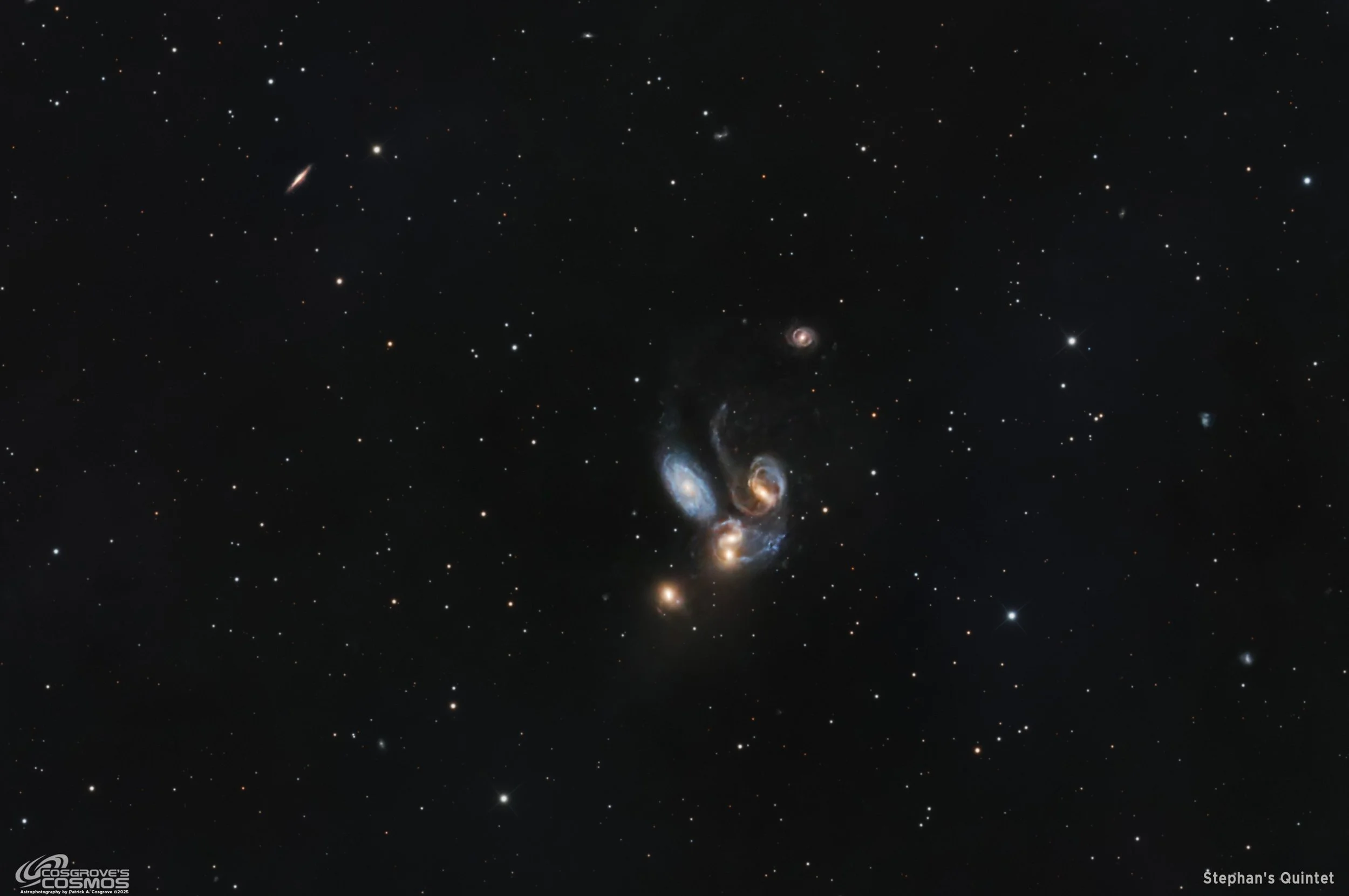
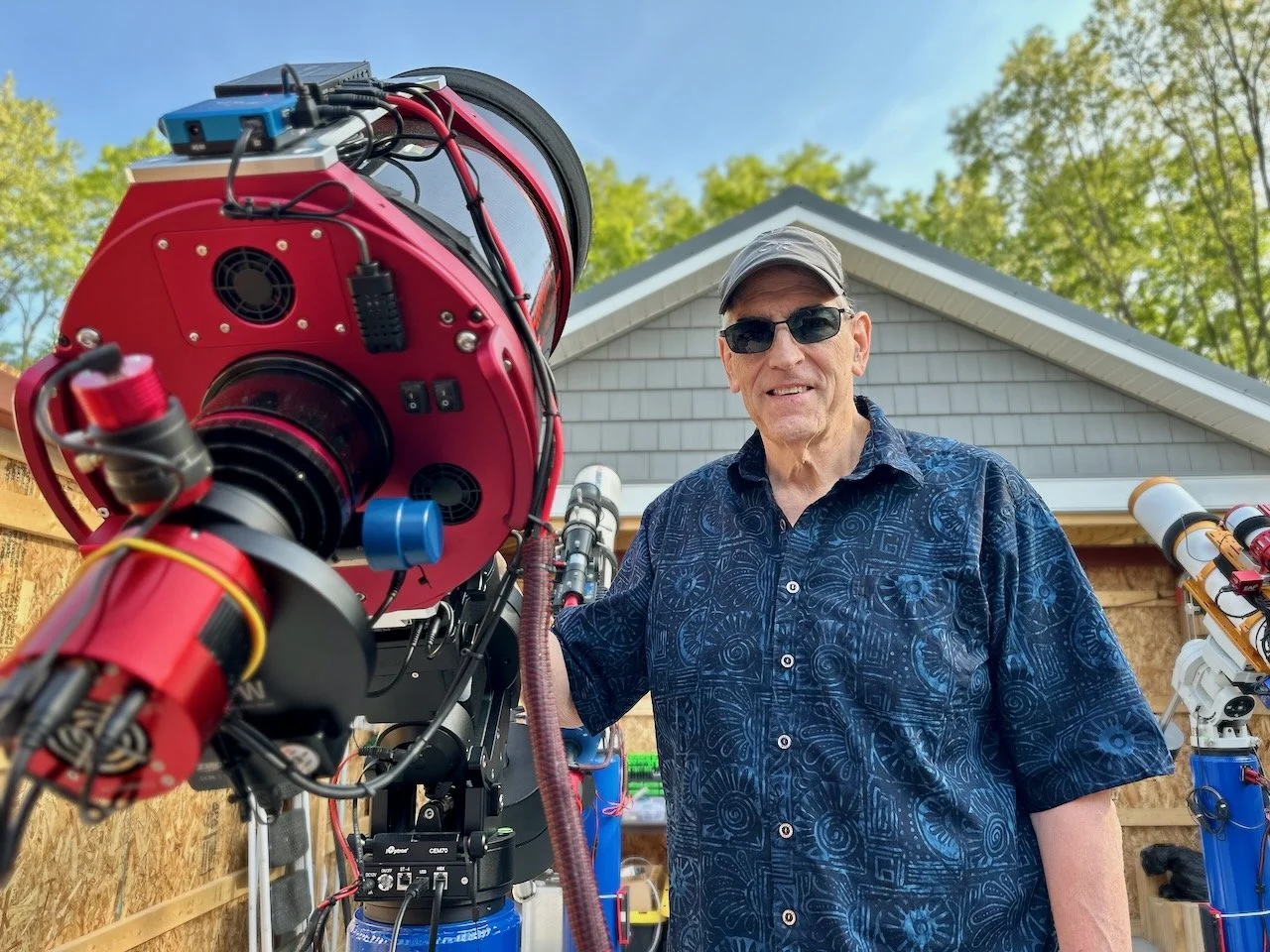

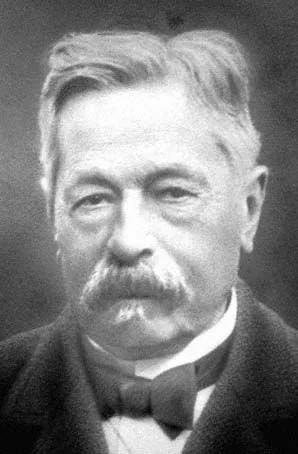

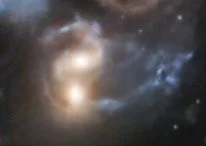
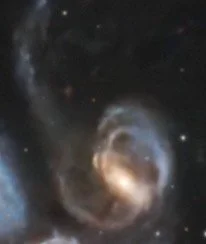

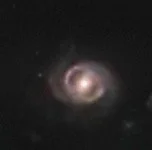


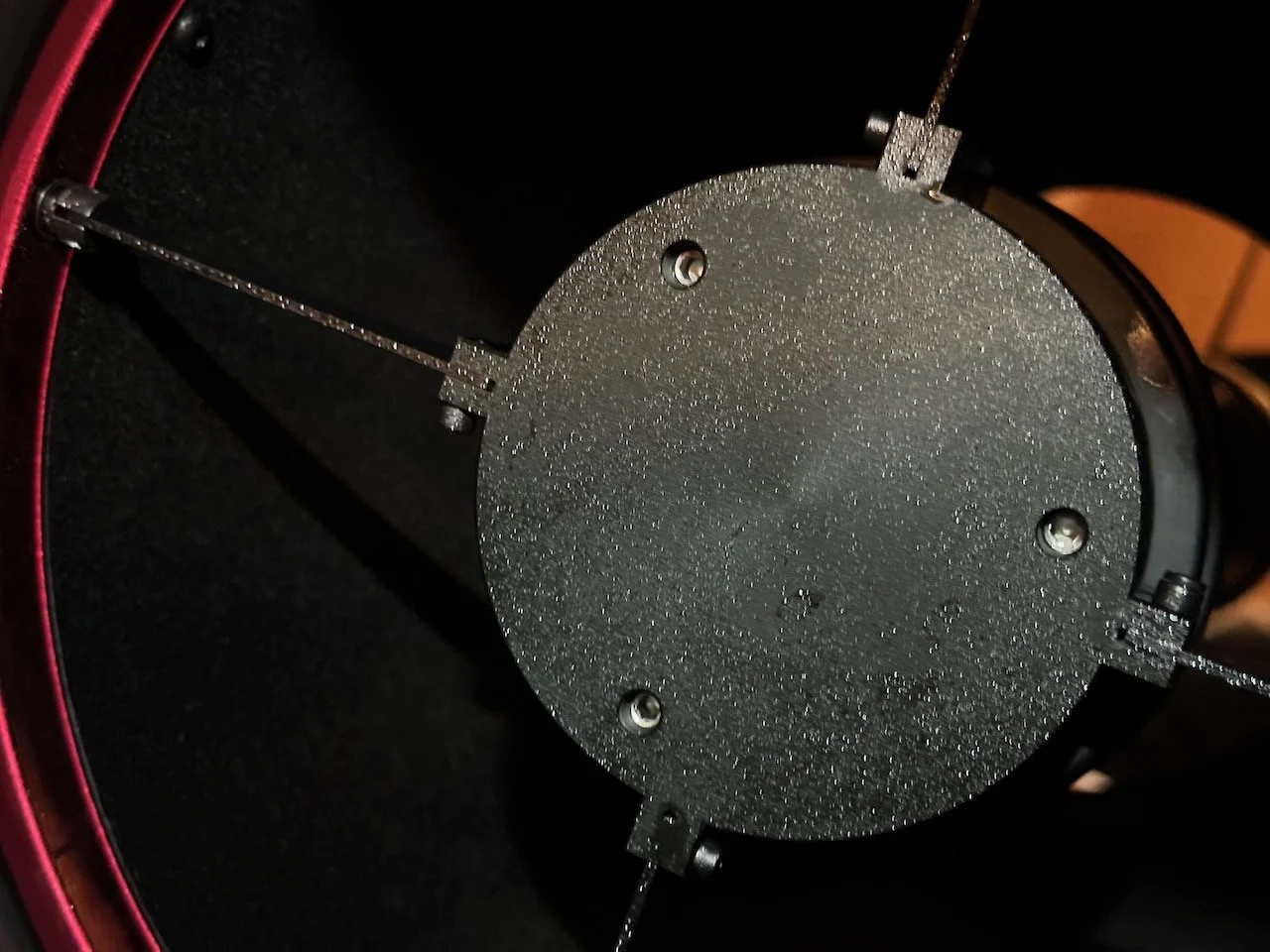
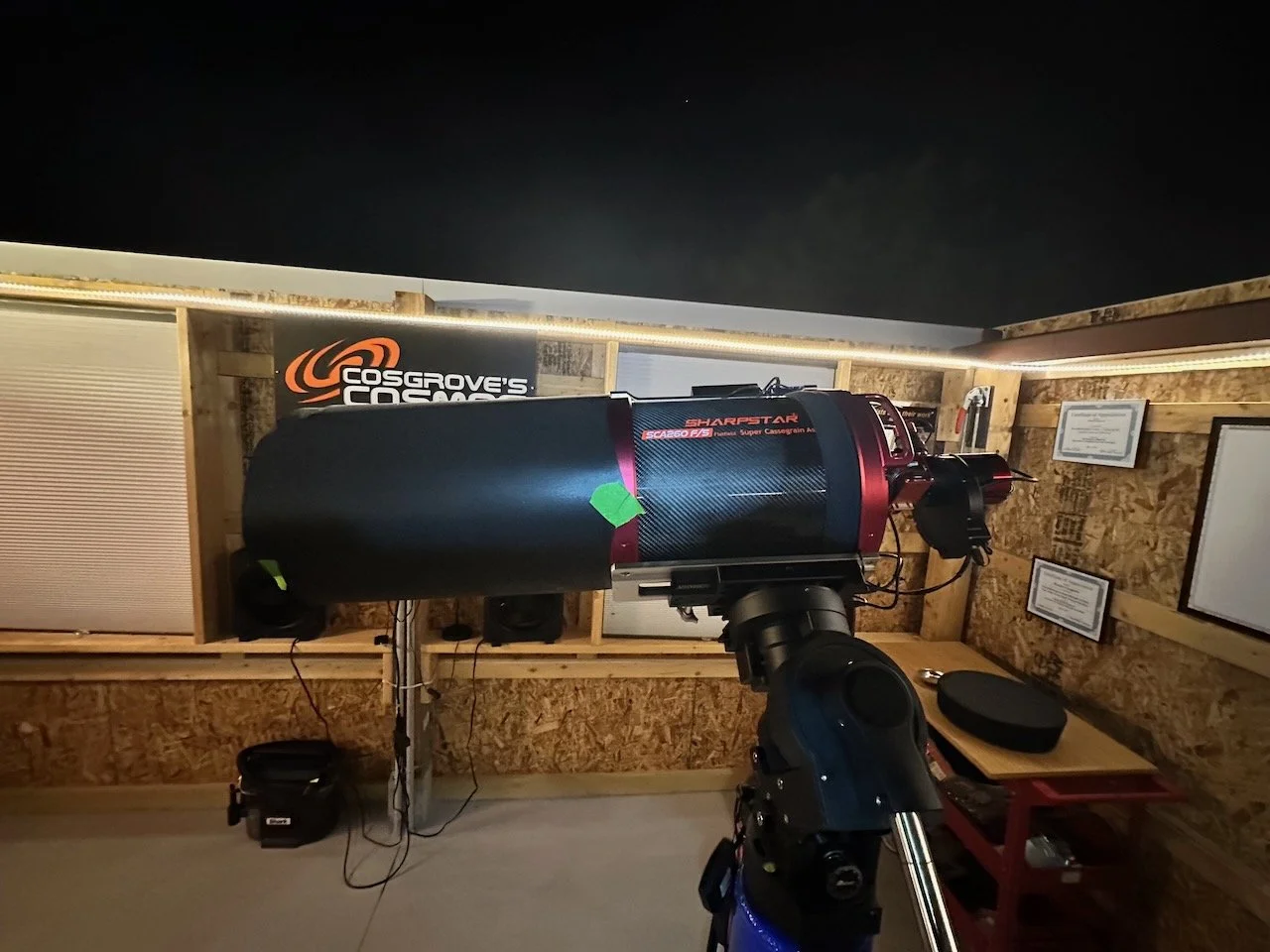
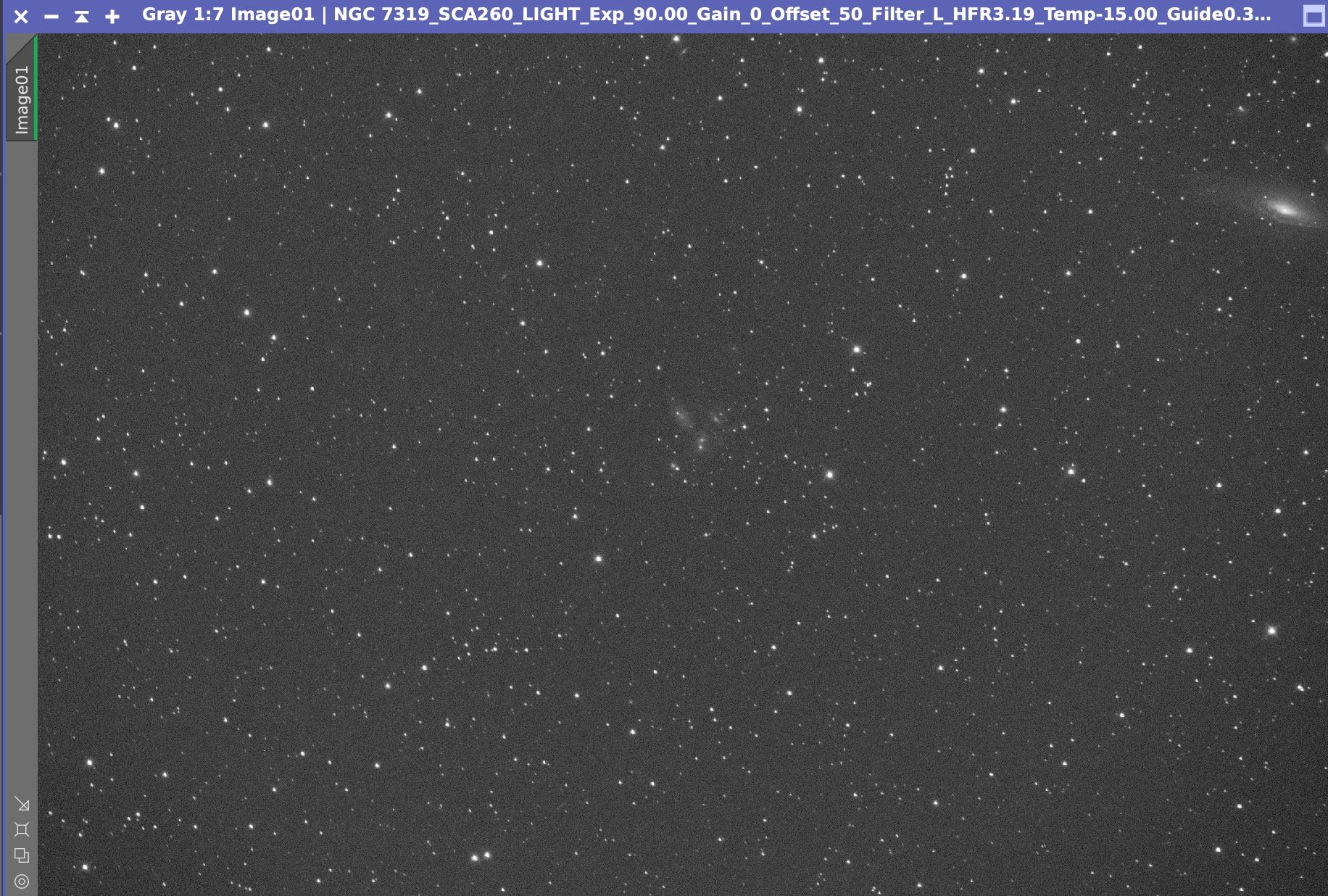
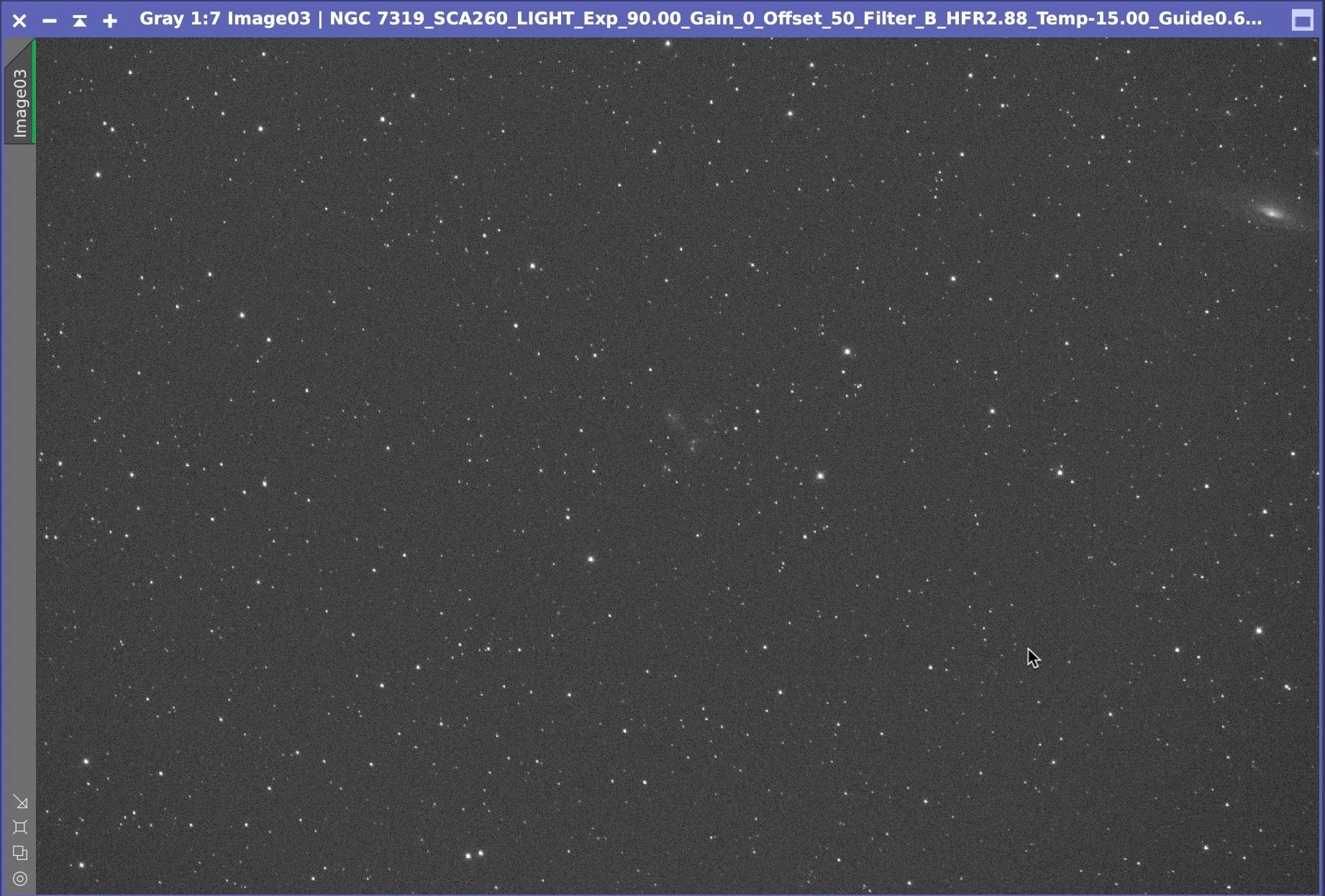
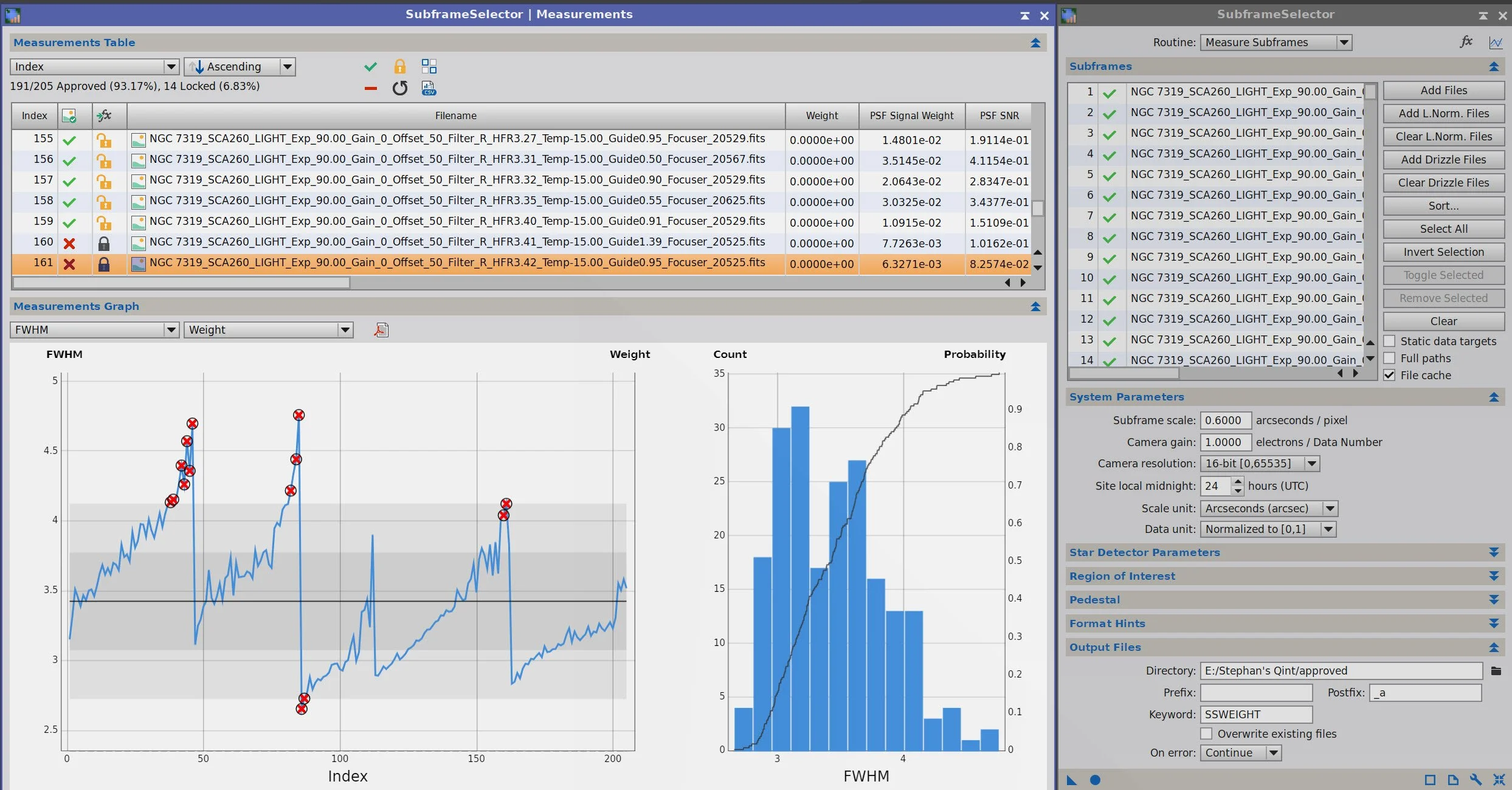

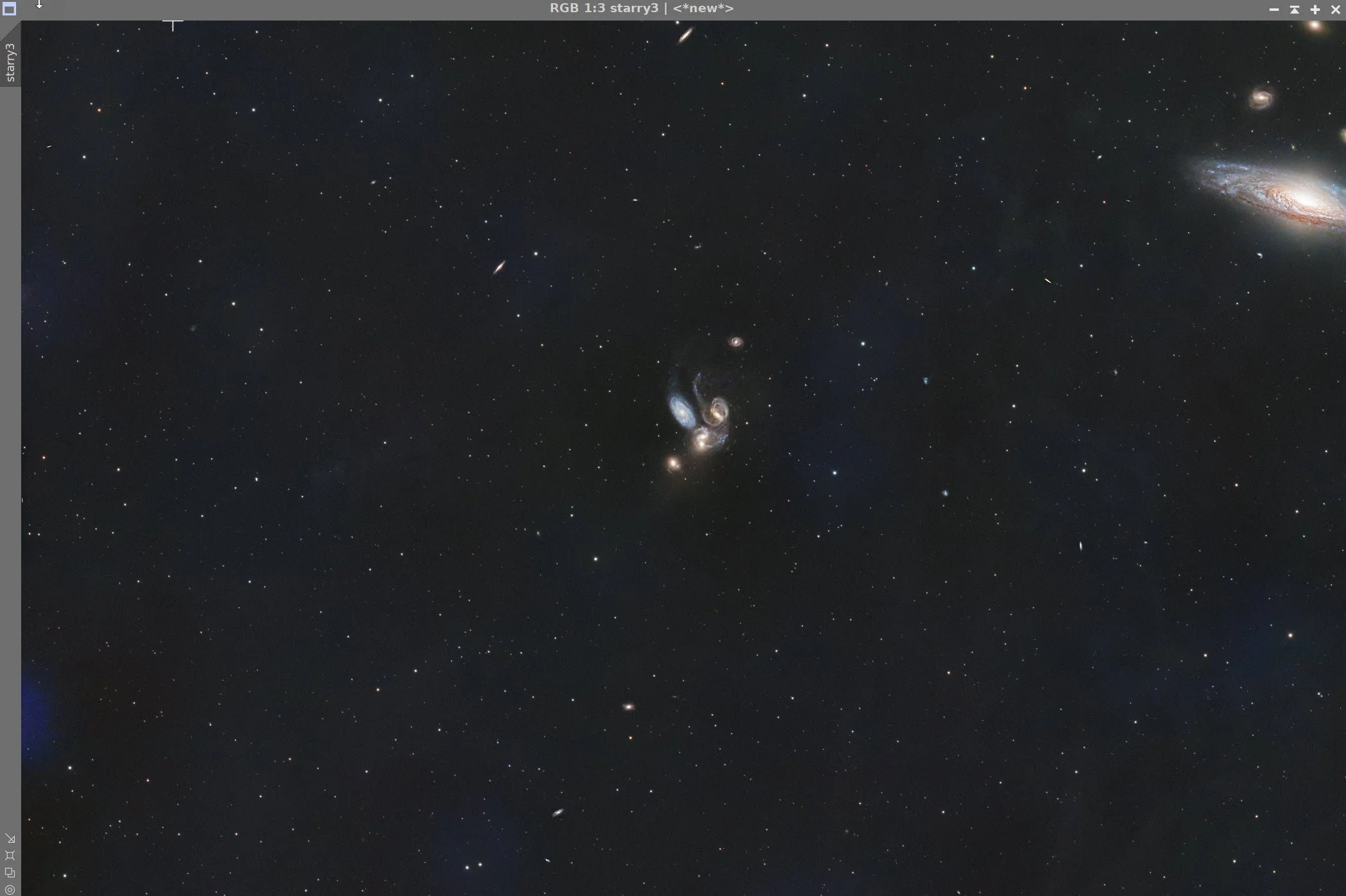
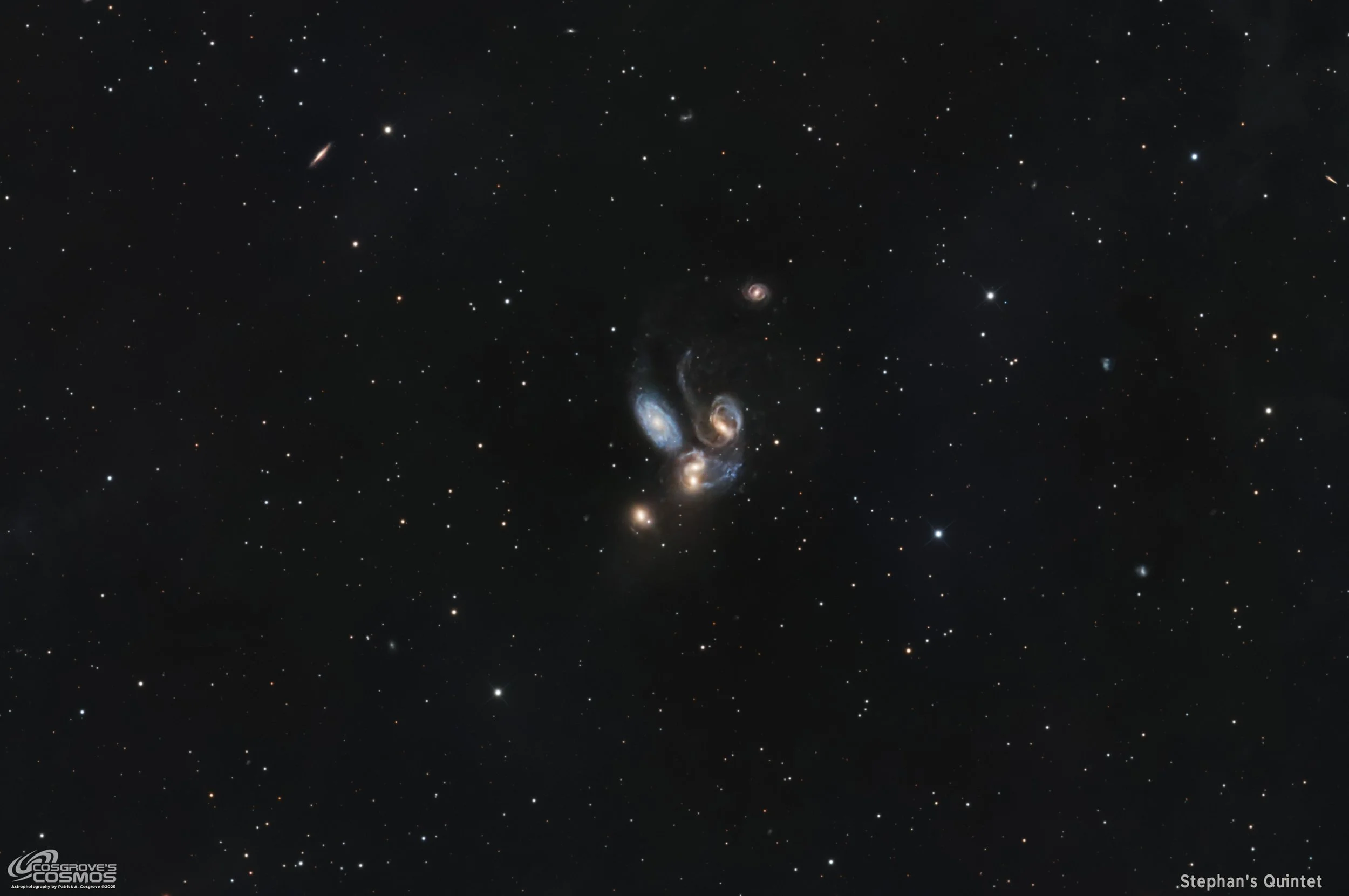
This post documents the setup and configuration of my New ‘Galaxy” scope, the Sharpstar SCA260 V2.